中国组织工程研究 ›› 2016, Vol. 20 ›› Issue (18): 2622-2627.doi: 10.3969/j.issn.2095-4344.2016.18.006
• 周围神经损伤动物模型 Animal models of peripheral nerve injury • 上一篇 下一篇
脊髓康对脊髓损伤大鼠Nogo-66受体NgR表达的影响
郭 杨1,马 勇1,2,冯 诚1,潘娅岚1,黄桂成1
- 1南京中医药大学骨伤研究所、骨伤修复与重建新技术实验室,江苏省南京市 210023;2南京中医药大学附属医院骨伤科,江苏省南京市 210029
Effect of Jisuikang on Nogo-66 receptor NgR expression in rats with spinal cord injury
Guo Yang1, Ma Yong1, 2, Feng Cheng1, Pan Ya-lan1, Huang Gui-cheng1
- 1Institute of Traumatology & Orthopedics and Laboratory of New Techniques of Restoration & Reconstruction of Orthopedics and Traumatology, Nanjing University of Chinese Medicine, Nanjing 210023, Jiangsu Province, China; 2Department of Traumatology & Orthopedics, Affiliated Hospital of Nanjing University of Chinese Medicine, Nanjing 210029, Jiangsu Province, China
摘要:
文题释义:
.jpg)
文题释义:
脊髓损伤:是指由于外界直接或间接因素导致脊髓损伤,在损害的相应节段出现各种运动、感觉和括约肌功能障碍,肌张力异常及病理反射等的相应改变。脊髓损伤的程度和临床表现取决于原发性损伤的部位和性质。脊髓损伤可分为原发性脊髓损伤与继发性脊髓损伤。前者是指外力直接或间接作用于脊髓所造成的损伤。后者是指外力所造成的脊髓水肿、椎管内小血管出血形成血肿、压缩性骨折以及破碎的椎间盘组织等形成脊髓压迫所造成的脊髓的进一步损害。
Nogo受体NgR:是Nogo-A发挥作用的受体,是一种糖基磷脂酰肌醇锚定膜蛋白,能与细胞外结构域Nogo-66结合,并被激活,激活的NgR启动神经细胞内的信号转导通路抑制轴突再生和结构的重塑性。
背景:研究发现,脊髓损伤后髓鞘相关抑制分子的产生是影响轴突再生微环境的重要原因。中医药具有多因素、多靶点的优点,正逐步成为改善神经再生微环境的研究热点。
目的:探索中药脊髓康对脊髓损伤后Nogo-66受体NgR表达的影响。
方法:144只大鼠随机等分为6组,假手术组、模型组、强的松组、脊髓康高、中、低剂量组,每组24只。后5组以改良Allen’s法建立脊髓损伤动物模型。强的松组大鼠每天给予0.06 g/kg醋酸泼尼松灌胃,1次/d。脊髓康低中高剂量组大鼠每天给予12.5,25,50 g/kg脊髓康灌胃,1次/d。假手术组和模型组大鼠每天给予20 mL生理盐水灌胃,1次/d。各组动物均连续给药至动物处死。
结果与结论:与模型组相比,强的松组及脊髓康低中剂量组大鼠脊髓组织中NgR蛋白及mRNA表达水平均显著降低。提示脊髓康可促进大鼠脊髓损伤后神经功能的恢复,可有效抑制脊髓损伤区NgR蛋白的表达,从而抑制不利于神经再生的因素,进一步改善神经再生的微环境。
中国组织工程研究杂志出版内容重点:肾移植;肝移植;移植;心脏移植;组织移植;皮肤移植;皮瓣移植;血管移植;器官移植;组织工程 ORCID: 0000-0002-8518-6160(郭杨)
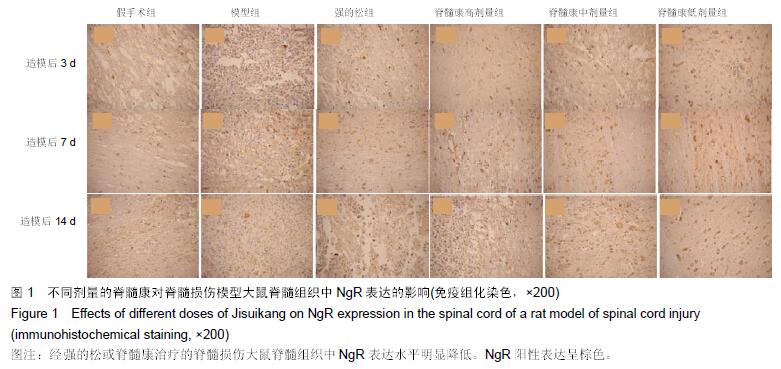
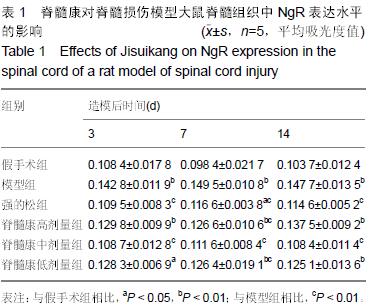
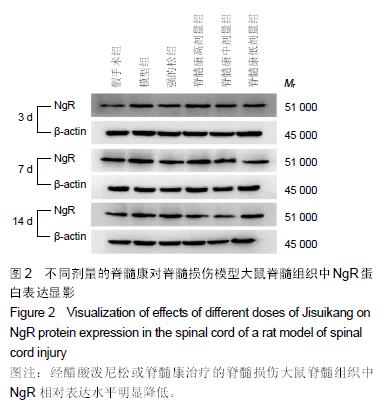
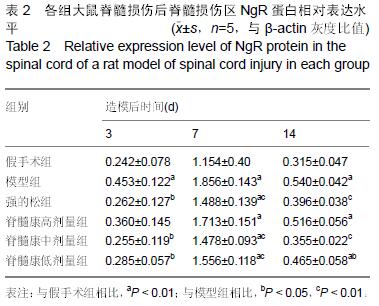
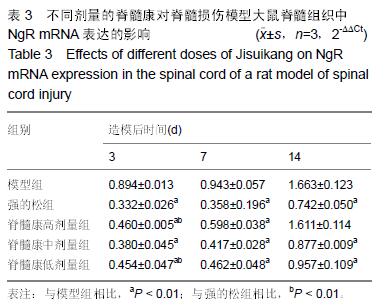
.jpg)